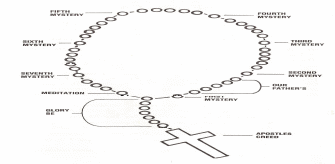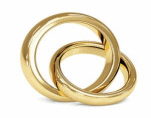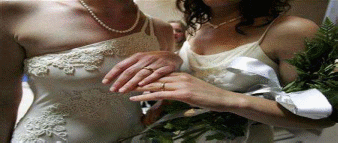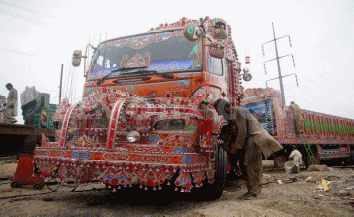Introduction
Material culture is one of the broadly debated topics which have attracted a lot of attention especially when attempting to determine the value attached to commodities. In this regard, authors suggest that the value, use, and meaning of commodities keep on changing during their historical evolution in accordance to people’s perspectives, preferences, and culture among other human aspects. This implies that they do not occupy a position in the society that could be defined constantly across cultures and time spells. These authors have further exemplified their sentiments by portraying how selected material things acquire different meaning in various contexts. In line with cultural change of value, this paper will focus on how authors have articulated their opinions in regard to material culture, select three items that have been used to exemplify it, and draw conclusions on how fashionable objects relate to this culture.
Authors on Material Culture
Various authors have profoundly focused on the ideology of material culture expressing their different views and depictions of how commodities acquire diverse meanings across cultures. Appadurai (1986) while expressing his views on material culture, ventured into describing the social life of commodities in a cultural perspective. He suggested that commodities cannot be described satisfactorily by virtue of a single definition without considering how their meaning change in different cultures (Appadurai, 1986). Further, he opposed the idea that the history of commodities can exhaust their biography arguing that their interpretation is always subjected to individual manipulation and perspective (Appadurai, 1986). This implies that the value attached to a commodity can hardly be determined resolutely in order to give a conventional meaning which could apply in all contexts.
Pels (2010) developed a similar argument while attempting to determine the magical nature of commodities and when they should be regarded as extraordinary. He pointed out that a commodity cannot become magical without the intervention of human intentions towards it (Pels, 2010). He stated that material things acquire their magical nature when they exert agency either beyond or against the capability of human beings (Pels, 2010).
Moreover, he developed an argument portraying the different perspectives in regard to modernistic and traditional perspectives towards magic. In this regard, he illustrated that a modernistic perspective could argue that human beings should not be moved by magic because they have an ingrained power of controlling nature (Pels, 2010). On the other hand, the traditional autonomy strongly believed in the power of magical things which include charms, amulets, and fetishes among others. Pels’ depiction managed to clearly show how the value, meaning, and power of commodities varies across different time spells owing to modernization.
In order to elaborate the above sentiments, various fashionable commodities could be used to show how meaning and value change in accordance to the mentioned aspects. While exemplifying the illustrations, we could focus on Appadurai’s discussion of the rosary, the use of rings, and the various views attached to the use of vehicle in the modern and traditional settings.
Rosary
While attempting to contend that commodities acquire varying cultural meanings, Appadurai (1986) elaborated the various meaning of the rosary. He used the rosary to explore the relationship between culture and materiality in a fairly profound manner.
Catholic Symbolism
Unlike the layman’s understanding which views the rosary as a mere collection of beads, Appadrui (1986) contended that Catholics regards it as a term that relates to both the beads and the sequence of prayers recited. According to the Catholics, it symbolises the most powerful prayer that is channelled to God through the Holy Mary Mother of God (Barclay, 2010). Picture 1 shows the combination of players in the rosary as recited by Catholics.

Due to this strong importance attached to the rosary, Catholics consider it as a holy tool of spirituality that must be held with great respect (Davidson, 1903). In respect to this spiritual significance, they do not use the rosary before it is not blessed by the clergies who include the priests, bishops, and cardinals among other people. This shows that the rosary is a holistic component that does not only represent a physical existence of a necklace-like ornament. Instead, it is symbol of spirituality that symbolises their commitment to God and holiness (Davidson, 1903). In addition, the rosary has fundamental symbols used in Catholic Church including the holy cross and image of Holy Mary. The incorporation of such symbols evidently shows the spiritual value that the believers attach to the rosary (Levivier & Gravier, 2006). Picture 2 shows the pope using a rosary for prayers.
Picture 2

Ornamental Value
Whereas the Catholics consider the rosary as a holy prayer, the atheists regard it as a mere ornament made of beads. Most of them wear it around the neck showing their contempt since they do not believe in the ideologies of the Catholic Church (Wills, 2006). The Catholics find the behaviour as being sinful and blasphemous to God. The use of rosary as an ornament is a perfect depiction of how materials things evoke completely different meanings across religions.
Mnemonic of Memory
Blackman (1918) suggested that rosaries are a good example of well arranged group of bead which aids in memorising. In this regard, Balckman (1918) explains that people of the ancient times made the rosaries by joining the beads which represented events. The rosary could thus stimulate people to recall, discuss, and celebrate the events which happened in the past (Balckman, 1918). In addition, he suggested that the Catholics embraced the culture of using the rosary as a memorising technique. In this case, the rosary has a combination of many prayers which are obviously difficult to count and memorise the number of players (Blackman, 1918). This could help the believers to avoid repeating the same player unnecessarily. Picture 3 portrays an ancient rosary, which was made in 1816, in order to memorise the difficulties of spreading Christianity in a world where atheism prevailed.

Signification of Atheism and Protest
When people use the rosary as an ornament, it develops a different perception on the Catholics. In this regard, Catholics regard such people as committing sins against the will of God. In most cases, the Catholics tend to associate such people with atheism and protestant churches. This is based on the premises that they do not recognise the significance of the rosary in regard to Mary Mother of God.
Rings
Description of Rings
Rings are circular ornaments that are put on fingers to signify conditions whose meanings are developed by the society. In this regard, rings are used in various situations including weddings and engagements where these contexts are defined by people in the society.

Picture 4. Portrays the visual representation of a ring.
Marriage Context
Rings are used to signify the commitment of marriage between husbands and wives. In this regard, they are perceived as the physical or outward representation of marriage in the traditional and modern setting. The Egyptians were probably the first people who used the rings to signify marriage. They designed the rings, which were made of reeds, bones, and ivory, using a circular shape. Hart & Stacy (2009) suggested that the circular shape was a sign of eternity which meant that a person who had granted a ring intended to create an eternal bond with the partner until death. Further Gad & Scammato (2004) further pointed out that lack of a ring could be associated with spinsters and bachelors. This perception thus developed the importance of married people to have something that differentiated them from the unmarried ones.
This culture has been passed over generations to the modern world where profoundly used as the formalisation of marriage. Hart & Stacy (2009) observed that in a wedding ceremony, the ring fitting session takes a crucial part of the ceremony where it is regarded as the climax of the ceremony. The authors then pointed out that the use of rings in weddings is culture that has maintained its meaning over years as opposed to others that change with time (Hart & Stacy, 2009). In addition, other people such as the Britons embraced this culture and maintained it to date as a signification of marriage bond.
Engagement
Engagement is a term used to describe a relationship between two lovers before they marriage. Johnson (2008) argued that the relationship could be equally referred to as courtship considering that it is meant to prepare partners for marriage life (Johnson, 2008). During this preparatory period, the partners might decide to show portray engagement using the engagement ring. However, they must portray their love for each other and signify their intentions for marriage (Johnson, 2008). However, the rings have to be used in a manner that differentiates engagement from marriage. In order to depict this difference, the engagement ring is put on the third finger next to the one used for marriage. Johnson (2008) pointed out that a ring, which is fitted on the third finger, is widely associated with engagement (Whittaker & Goetzman, 1968).
Gays and Lesbians
Sexual relationships between people of the same sex have become prevalent in the modern world. Moreover, the modern society is gradually appreciating the formalisation of same sex marriage by virtue of wedding ceremony and rings (Matlins & Bonanno, 1990). They have devised special rings to portray different ideologies and principles of gays. For example, their rings are decorated with a man’s symbol and an astronomical circle joined to a pointing arrow. The rings are also decorated with two intertwined symbols of planet Mars (Miller, 1987). The circle and pointing arrow symbolise the strength of gays’ relationship.
The two symbols of planet Mars portray the relationship between two male partners (Johnson, 2008). Further, the entire ring is symbolic of the gay pride which is crucial to their self-esteem. Additionally, gays use a six-coloured gem to represent the gay flag. This flag is a representation of both their pride and shows how they value each other. Moreover, the six colours indicate the freedom of gays considering that they have been intensely fighting for their (Stearns, 1997). Picture 5 shows a gay wedding with the gays putting the rings on.

While designing these rings, David Spada included colour red representing life, orange portraying a spirit of healing, yellow signifying the sun, green indicated nature, and blue as a sign of harmony (Whittaker & Goetzman, 1968). All these representations indicated the different people who were coming together to fight for the independence of gays (Whittaker & Goetzman, 1968).
Rings have also been used widely as symbols of the relationship between two or more women. Their rings comprise of various features including a symbol of planet Venus and an inverted pink triangle (Hulsbosch & Bedford, 2009). Venus is symbolic of strong womanhood which is considered as the driving force of lesbianism. In addition, the inverted pink triangle is used to represent their opposition against the oppression of lesbians. The significance of this triangle developed from Nazil culture in Germany (Wilson, 2011). In Nazil, Hitler used a triangle to mark antisocial women, prostitutes, and women who used contraceptives (Wilson, 2011). Picture 6 is a pictorial depiction of the lesbians using rings as a symbol of engagement.

Picture 6. Lesbians using rings as a symbol of engagement.
Ownership
Alexandra (2011) revealed that the Romans were the immediate people who adopted the culture of rings from the Egyptians (Wilson, 1951). However, they embraced this behaviour with a different twist. The Romans exchanged rings to show a sense of ownership. Men were the ones who mostly gave the ring to own women (Alexandra, 2011). This implied that those women could not relate with other men romantically. He further contended that any woman who associated with another man after accepting the ring could be prosecuted by the community. The ring was regarded as one of the strongest signs of commitment (Gleason, 2006. It could not be taken for granted in the society. Additionally, Alexandra (2011) pointed out that the value of material used to make the rings symbolized the extent to which the engaged partners loved each other. In fact, the man who offered a more valuable ring could be considered as a better lover than the others (Alexandra, 2011).
Sign of Wealth
In addition, rings were used by the Romans as an indication of wealth. In this case, the material used to make the ring indicated the status of that person (Stevenson, 1984). For example, gold rings elevated the owners to a high social status in the society (Alexandra, 2011). They were regarded to have a lot of wealth. Those whose rings were made of diamond were regarded as relatively rich in the community. In fact, some wealthy people could put on such rings to show off. Valuable rings could also show how much the lovers valued their partners.
Decoration and Beauty
In some instances, rings are not necessarily used to represent or portray a given cultural behaviour in the society. In such instances, people use rings as jewellery for decoration and beauty so that they are not intended to give any substantial meaning adjoined to them (Espejo, 2009). When they are used for beauty, most people prefer fitting them on all the fingers in order to distort the other cultural meanings that could be associated. Since each finger has a separate meaning, people cannot associate the multiple rings with any other meaning rather than decoration (Glassie, 1999).
Vehicles
Vehicles have become fashionable especially in the modern era where car ownership is a basic and obvious achievement. In this regard, people have deviated from the traditional ideology of viewing vehicles as purely transportation machines (Spilsbury, 2006). There are various views that the modern world has upheld in regard to the vehicles.
Transportation Vessels
Vehicles are primarily considered as transportation vehicle for delivering goods and transporting people. This has been the basic view that people had in regard to the use of vehicles. In fact, the original inventors aimed at providing efficient, fast, and easy means of transportation (Hennessy & Hester, 2011). This has basic use has not disappeared since the time of invention. Instead, it has been carried forward to the modern world where engineers are developing advanced vehicles for transporting people and goods. Picture 7 shows a modern vehicle used for transportation of people. It is one of the modern public means of transportation that has been developed in the modern world to save energy and reduce the carbon footprint.

Figure 8 shows the heavy trucks used to transport container from the ports. Most of these containers are used to transport good which are on transit.

This tradition has however changed with time such that the modern people buy vehicles for completely different reasons.
Vehicles for Prestige
Unlike the traditional setting where vehicles were majorly used for transportation purposes, the modern people view them as factors of prestige (Hennessy & Hester, 2011). Vehicle ownership is no longer a question of how convenient they make transportation. Instead, most people consider car ownership as a factor of elevating individual status in the society. In the modern world, changing the type of vehicles according to the advancement of technology is a common thing. This is done for the purpose of keeping up to the latest fashion in the market. This is enforced by the fast growing technological knowledge where new type of vehicles are developed at a very fast rate which increases the rate of obsolesce (Hennessy & Hester, 2011). For example, the Range Rover manufacturers are developing their models at a very fast rate where they have moved from the Range Rover Sport to the latest Range Rover Evoque. People are competing to update their vehicles in order to get the best quality and prestige.
Business Investments
While vehicles are regarded as transpiration vessels and source of prestige, some people consider them as business investments. This tendency was very rare in the traditional setting especially in developing countries where they were indifferent about businesses. However, it is intensely prevalent in the modern world such that most investors buy heavy trucks, busses, and taxis to transport goods and people (Ostrower, 1995). Vehicle investments have become a fundamental factor of economic development which has opened up many businesses across the world. This implies that the perspective with which people view the meaning of vehicles changes in accordance to their individual interest. In this case, the business investors regard the vehicles as investment while a passenger considers the same vehicle as a vessel of transportation.
Advertisement
Currently, some people have personalised views considering vehicles as advertisement tools. Advertisers stick some poster with advertisement information on the body of moving vehicles to attract the attention of customers and increase sales. Some of the vehicles are specifically meant for facilitating advertisement (Ostrower, 1995). Picture 9 shows a truck which is being used to advertise a commodity in the streets of a city.

From picture 9 it is evident that the stickers found on the body do not have any technical importance on the operation of the vehicle. Instead, they have been stuck to attract the eyes of the public and simultaneously facilitate advertisement of any commodity.
Show of Wealth
Lastly, vehicles have been used to portray and measure the wealth of people especially in the modern world. Wealthy people only purchase the costly and recognized vehicles in the market. They do this to elevate show their financial capabilities among other people (Ostrower, 1995). The same view is evident to those people who even do not own the vehicles. They tend to measure the financial ability of a person by evaluate the type of vehicle they have. People with very costly vehicles are considered as wealthy people. On the other hand, the ones who own less costly vehicles are profiled to low financial levels.
Conclusion
Appadurai (1986) builds an argument suggesting that materials do not have real value. Instead, their value is determined by the culture of those people who use and interact with the commodity. Appadurai (1986) concludes his discussion stating that the meanings attached to any object depends upon the context within which it is placed. This has been portrayed evidently while focusing on the three fashionable commodities of the modern world. It cannot be disputed the meaning and value of rosaries, vehicles, and rings change in accordance to cultural context, time, and individuals (Appadurai, 1986). We can thus conclude that one cannot define the meaning of an object with finality without considering the subjective nature of these contexts. From a broad perspective this paper implies that we cannot have absolute truths, morals, and wrongs. Instead, all interpretation of all commodities, behaviors, and principles is relative as well as contextual (Appadurai, 1986).
References
Appadurai, 1986, The Social Life of Things: Commodities in Cultural Perspective, Cambridge University Press, Cambridge. Web.
Barclay, F 2010, The rosary, Center Point Publishers, Thorndike. Web.
Blackman, W 1918, The rosary in magic religion, Cambridge University Press, Cambridge. Web.
Davidson, J 1903, A rosary, G. Richards Publishers, London. Web.
Espejo, R 2009, The culture of beauty, Greenhave Press, Detroit. Web.
Gad, O & Scammato, J 2004, Wedding rings, Stewart Publishers, New York. Web.
Glassie, H 1999, Material culture, Indian University Press, Bloomington. Web.
Gleason, K 2006, Ancient Egyptian culture, Rourke Publishers, Vero Beach. Web.
Hart, J & Stacy, J 2009, Stetsons, spring & wedding rings, Harlequin Books, Toronto. Web.
Hennessy, K & Hester, B 2011, Car: the definitive visual history of the automobile, DK Publishers, New York. Web.
Hulsbosch, M & Bedford, E 2009, Asian material culture, Amsterdam University Press, Amsterdam. Web.
Johnson, E 2008, The engagement ring book, Sterling Publications, New York. Web.
Levivier, J & Gravier, A 2006, The Rosary, Incorporated Catholic Truth Society, London. Web.
Matlins, A & Bonanno, A 1990, Rings of love: how to buy & enjoy your engagement & wedding rings, Gemstone Press, Woodstock. Web.
Miller, D 1987, Material culture and mass consumption, Blackwell, Oxford. Web.
Ostrower, F 1995, Why the wealthy give: the culture of elite philanthropy, Princeton University Press, Priceton. Web.
Pels, P 2010, The Oxford Handbook of Material Culture Studies, Oxford University Press, Oxford. Web.
Spilsbury, L 2006, Vehicles, Evans Publishers, London. Web.
Stearns, P 1997, Fat history: bodies and beauty in the modern West, New York University Press, New York. Web.
Stevenson, S 1984, Gold earrings, Pulp Press, Vancouver. Web.
Whittaker, O & Goetzman, A 1968, The true story of the tooth fairy and why brides wear engagement rings, Droke House Publishers, Anderson. Web.
Wilson, J 1951, The burden of Egypt; an interpretation of ancient Egyptian culture, University of Chicago Press, Chicago. Web.
Wills, G 2006, The rosary, Souvenir, London. Web.
Wilson, T 2011, Earrings, Guild of Master Craftsman, East Sussex. Web.
Woodward, I 2007, Understanding material culture, Sage Publication, Los Angeles. Web.